What’s the first thing that comes to mind when you hear about Gujarati weddings? Garba nights and dandiya sticks, right? But there’s so much more to Gujarati weddings than just Garba and Dandiya.
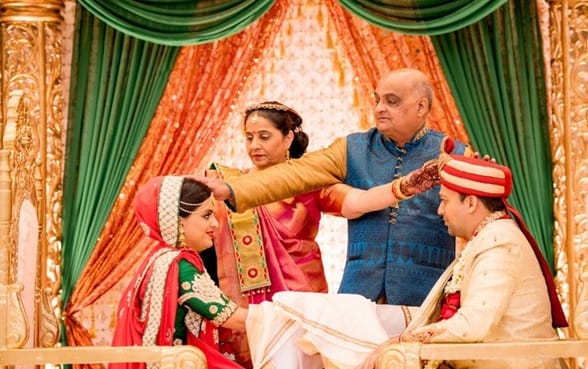
With rich traditions, fantastic food, and heartwarming rituals, we’re here to dissect every little detail of Gujarati weddings. Let’s dig in!
Pre-wedding Rituals!
India is all about celebrations. Celebrations start in India long before D-Day, and Gujarat is no exception. So, here are the pre-wedding rituals:
Chandlo Vidhi
Chandlo Vidhi is a ritual when the bride and groom’s families seal the deal! With his family members, the groom visits the bride’s home when the bride’s father applies Chandlo (red vermillion) on the groom’s forehead, thus fixing the official wedding date.
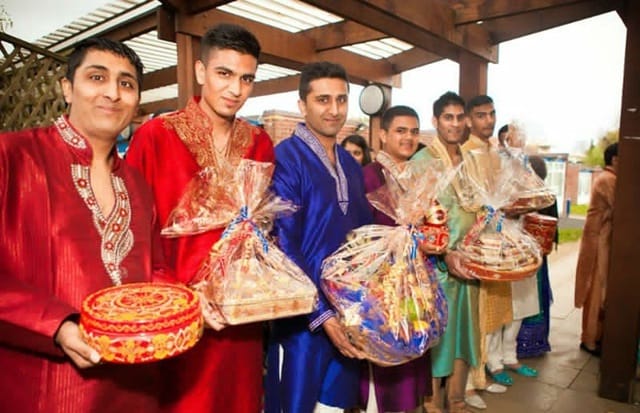
Gol Dhana
If you go by the words, Gol Dhana means jaggery and coriander seeds. However, the ritual represents the engagement ceremony. The bride and her family bring gifts and sweets to the groom’s home.
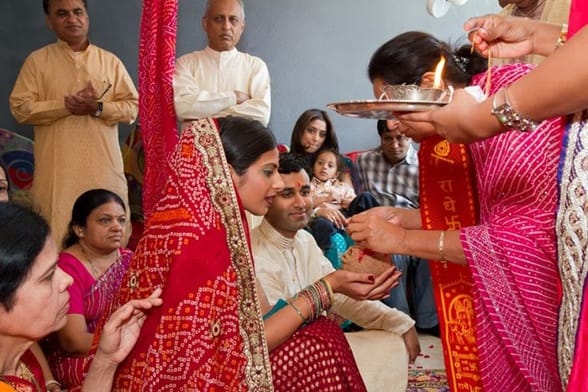
The couple exchanges rings and takes blessings from five married women from each family. Once the ritual ends, everyone enjoys a hearty Gujarati meal.
Mehndi and Sangeet Sandhya
These events occur two days before the wedding. Sangeet days transform the bride’s home into a vibrant party venue. All the women apply henna while singing and dancing to their favorite traditional songs.
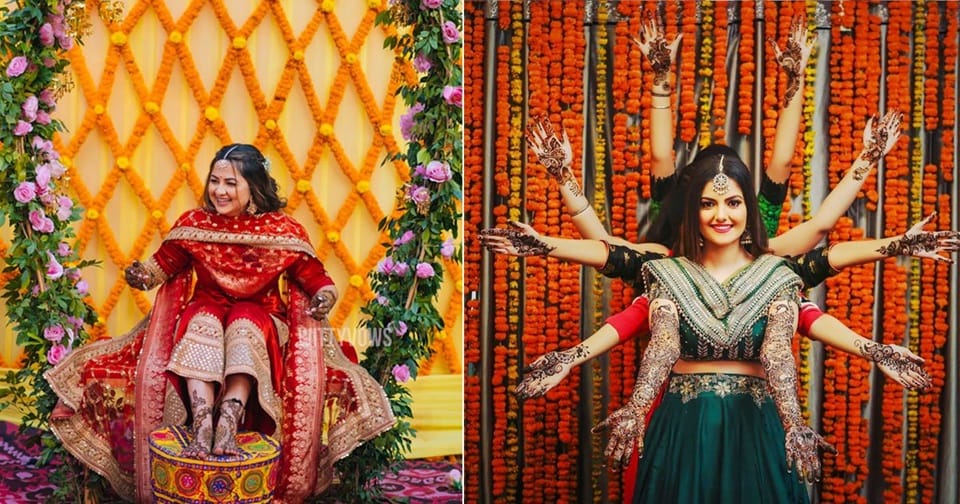
After the mehndi, sangeet sandhya takes place. It’s a fun-filled musical evening where family and friends have a gala moment with Garba and Dandiya. Sanji, or sangeet, is the first event where families engage with each other and break the ice with music, dance, and, of course, food!
Pithi
It is the Gujarati version of the Haldi ceremony, where they prepare a special paste, including turmeric, sandalwood, rosewater, and herbs, before applying it to the bride and groom.
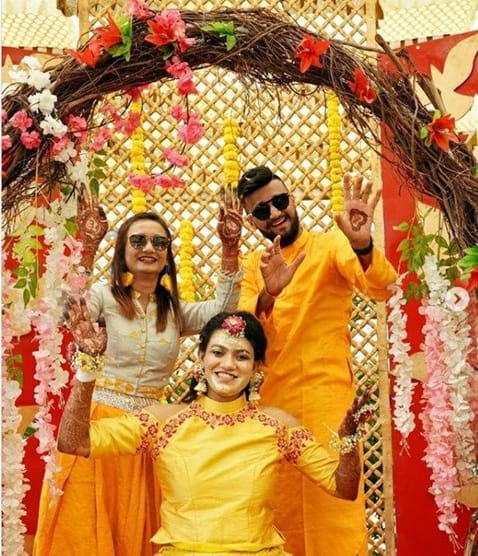
The tradition is that the paternal uncle’s wife (kaki) will prepare this paste. The bride and groom have a holy bath after they have the Haldi.
Wedding Rituals
The main event is here. Without further ado, let’s have a look at the wedding rituals at once:
Varghodo
Before the groom leaves for the wedding, his sisters perform a protective ritual by circling his head with a bowl of money to ward off evils. This ritual symbolizes the loving bond between the siblings.
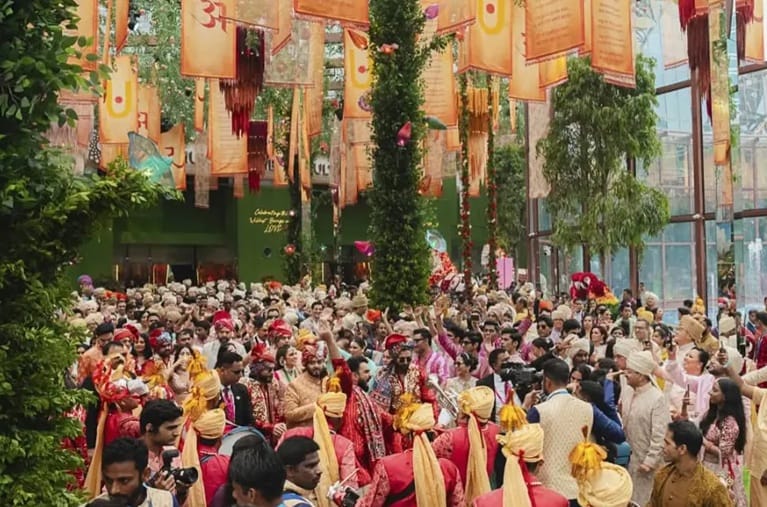
After the ritual, the groom heads to the venue, playing Dhol and dancing with the entire family.
Agaman and Ponkhu
It is similar to baraat. The groom, with the whole crew, arrives at the wedding venue. The bride’s family welcomes them with aarti and sweets. Ponkhu is pure fun.

Ponkhu occurs when the groom is about to enter the mandap. Then, the bride’s mother performs the aarti and attempts to grab his nose! It is a playful reminder to be humble now that he’s here to ask for their daughter’s hand.
Jaimala and Hasta Milaap
The bride and groom finally exchange flower garlands (Jaimala) as a sign of acceptance and mutual respect. Sometimes, there’s a fun height battle to see who garlands first!
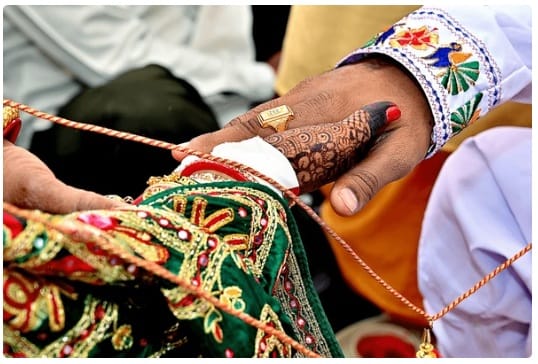
During the hasta Milaap ritual, the priest ties the groom’s shawl with the bride’s saree, portraying the couple’s union while sacred mantras are chanted while showering rice and petals on couples as blessings.
Post Wedding Rituals
Finally, the wedding is over! But rituals aren’t! So, let’s have a look at the post-wedding rituals below:
Saubhagyavati Bhava
After the wedding, the bride is blessed by seven married women while uttering the words, “Saubhagyavati bhava,” which means “May your married life be filled with joy, love, and prosperity.”
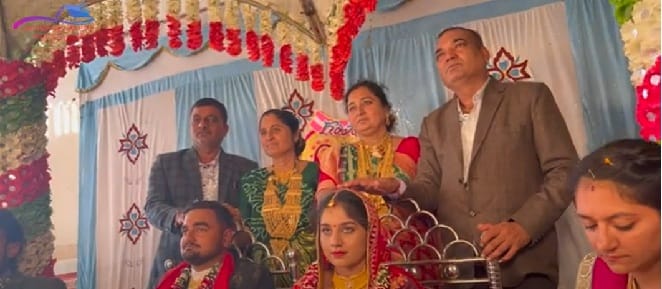
Pakadyo Chhedo
It is a cheeky tradition. Here, the groom jokingly holds the mother-in-law’s pallu and requests more gifts. Everyone stuffs her pallu with presents, which usually go to the groom and his team!
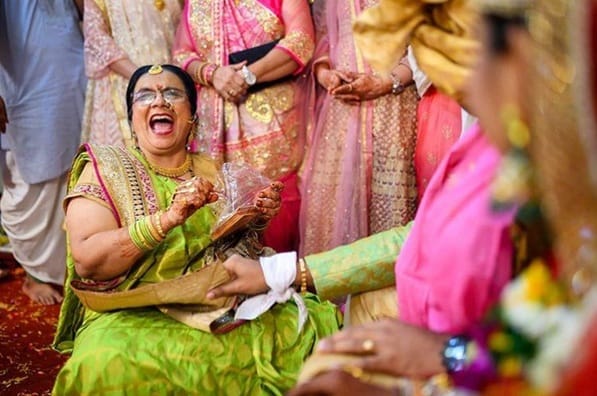
Ghar Nu Laxmi
Finally, the new bride enters her husband’s home, where she is welcomed as a goddess. She gently kicks a rice pot at the entrance, and the groom’s mother performs Aarti. Ghar Nu Laxmi means the bride is considered Laxmi, the goddess of wealth and prosperity.
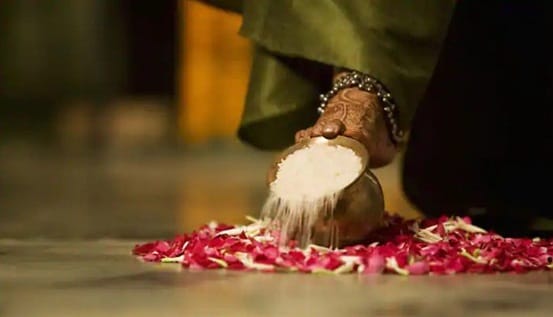
Conclusion
So, next time you attend a Gujarati wedding, try to go beyond seeing just the Garba and Dandiya. See the beauty of this culture hidden in their wedding rituals.


